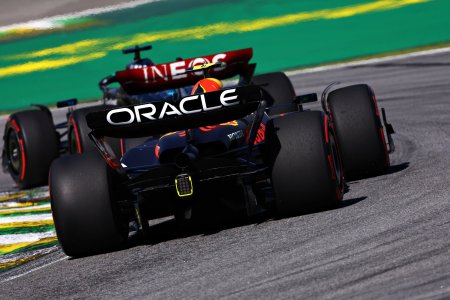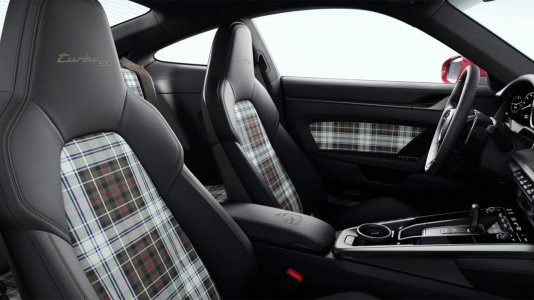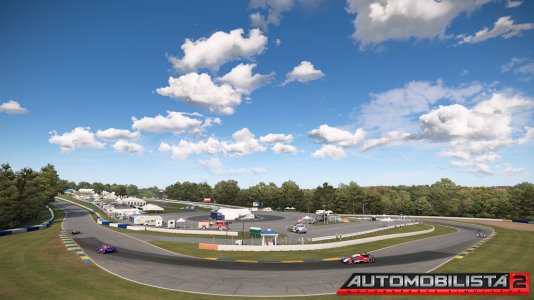Paul Jeffrey
Premium
Kunos physics expert Aristotelis Vasilakos continues the new build blog post tradition... this time paying attention to the new MoTeC functionality within the sim...
With release six of Assetto Corsa Competizione comes the inclusion of support for the often discussed, and rarely understood MoTeC telemetry support.. a bit of a black art that Kunos Simulazioni physics developer Aris Vasilakos attempts to explain in his latest blog posting release.
Frankly I know what it is, but not how to use it properly, so I'll shut up and let you read the new post from Aris in full below...
Assetto Corsa Competizione officially supports data analysis, by exporting in MoTec i2 native format.
Assetto Corsa Competizione has been conceived since the beginning to recreate a GT3 racing car, in the most faithful and realistic way, as well as the complexity of the Blancpain GT3 series championship. Users of ACC can obviously just jump in and drive the amazing GT3 cars of the Blancpain series, but as the competition heats up, they will find that the GT3 cars are very sensitive vehicles and their performance and handling characteristics are greatly depended by setup choices. Industry first simulation features in ACC, further influence the cars behaviour as in real life. As simracers and real life drivers are using ACC seeking for more performance, car and driving data acquisition and analysis becomes of paramount importance in order to optimise Practice Sessions training and bring a good car setup for Qualifying and Race Sessions.
MoTeC i2 software solution is an industry leader in data analysis. It can help greatly with reviewing overlaid data, creating track maps analysis, comparing graphs, implementing math channels and more. All of the above and more, if properly used, can provide a good indication of the car handling and give good hint on driver’s performance.
MOTEC i2 DOWNLOAD LINKS
You can download MoTeC i2 software from the following links:
MoTeC software latest releases page: https://www.motec.com.au/software/latestreleases/
direct download MoTeC i2 Pro: i2 Pro V1.1.4.0454 (64Bit)
(it is free for non professional use)
ACC WORKSPACE
To get the most out of a telemetry lap analysis, you need to know how to read it. The MoTeC i2 software is created with the help and used by the best motorsport racing teams all around the world. It is a complex software than can intimidate even the most knowledgable racing engineers. Because of that, we collaborated with a racing engineer to create a specific MoTeC workspace. A workspace is a sort of a template that includes various worksheets with different data channels, histograms, track maps etc. It gives you a perfect starting point to work on your laps, with ordered data and worksheets for each kind of analysis you intend to undergo. The workspace is based on actual real driver performance evaluation and is specifically tuned for ACC data channel export.
ACC uses exclusively real data to simulate the GT3 cars and tyres of the Blancpain GT3 series. As you would expect, such data are protected under heavy NDAs and licensing. We took extra care to protect such data but on the other hand we understand the necessity to provide simracers with proper telemetry output. The ACC data export and MoTeC workspace is all that is needed to evaluate driver performance and car behaviour. The number of the available data channels might seem more limited than say AC1 exports, but it is both realistic in terms that you get data channels that actual cars have, and more permit to focus more on the driver and car performance than reverse engineering and validation.
HOW TO INSTALL THE ACC WORKSPACE
Once you have installed the MoTeC i2 software, run it at least once then close.
Start Assetto Corsa Competizione and go to any track with any car. Then close ACC.
Now into your “documents/Assetto Corsa Competizione/MoTeC/Workspaces” you’ll find a folder named “base_ACC”. Copy this folder inside “documents/MoTeC/i2/Workspaces” folder and it will appear through the available workspaces inside the MoTeC i2 software.
Alternatively you could double click on the file ”base_ACC.i2wsp-archive” and the workspace will auto-install, but on some configurations windows might not recognize how to run this file.
HOW TO EXPORT TELEMETRY FROM ACC
To enable ACC telemetry export, all you have to do, is go into the “Electronics” section of the car setup and set the number of laps that you want to be saved. Every time you go out to the track, ACC will automatically export the number of laps selected. If you do more laps than selected, it will save the latest ones. For every time you go to the track, a new session of telemetry will be exported. In that way you can create different setups that export a different amount of laps, giving you the possibility to have practice session setup that save a big amount of telemetry laps and race setups that save less or no telemetry laps at all, keeping your RAM and HDD space under control during long races.
Assetto Corsa Competizione has been conceived since the beginning to recreate a GT3 racing car, in the most faithful and realistic way, as well as the complexity of the Blancpain GT3 series championship. Users of ACC can obviously just jump in and drive the amazing GT3 cars of the Blancpain series, but as the competition heats up, they will find that the GT3 cars are very sensitive vehicles and their performance and handling characteristics are greatly depended by setup choices. Industry first simulation features in ACC, further influence the cars behaviour as in real life. As simracers and real life drivers are using ACC seeking for more performance, car and driving data acquisition and analysis becomes of paramount importance in order to optimise Practice Sessions training and bring a good car setup for Qualifying and Race Sessions.
MoTeC i2 software solution is an industry leader in data analysis. It can help greatly with reviewing overlaid data, creating track maps analysis, comparing graphs, implementing math channels and more. All of the above and more, if properly used, can provide a good indication of the car handling and give good hint on driver’s performance.
MOTEC i2 DOWNLOAD LINKS
You can download MoTeC i2 software from the following links:
MoTeC software latest releases page: https://www.motec.com.au/software/latestreleases/
direct download MoTeC i2 Pro: i2 Pro V1.1.4.0454 (64Bit)
(it is free for non professional use)
ACC WORKSPACE
To get the most out of a telemetry lap analysis, you need to know how to read it. The MoTeC i2 software is created with the help and used by the best motorsport racing teams all around the world. It is a complex software than can intimidate even the most knowledgable racing engineers. Because of that, we collaborated with a racing engineer to create a specific MoTeC workspace. A workspace is a sort of a template that includes various worksheets with different data channels, histograms, track maps etc. It gives you a perfect starting point to work on your laps, with ordered data and worksheets for each kind of analysis you intend to undergo. The workspace is based on actual real driver performance evaluation and is specifically tuned for ACC data channel export.
ACC uses exclusively real data to simulate the GT3 cars and tyres of the Blancpain GT3 series. As you would expect, such data are protected under heavy NDAs and licensing. We took extra care to protect such data but on the other hand we understand the necessity to provide simracers with proper telemetry output. The ACC data export and MoTeC workspace is all that is needed to evaluate driver performance and car behaviour. The number of the available data channels might seem more limited than say AC1 exports, but it is both realistic in terms that you get data channels that actual cars have, and more permit to focus more on the driver and car performance than reverse engineering and validation.
HOW TO INSTALL THE ACC WORKSPACE
Once you have installed the MoTeC i2 software, run it at least once then close.
Start Assetto Corsa Competizione and go to any track with any car. Then close ACC.
Now into your “documents/Assetto Corsa Competizione/MoTeC/Workspaces” you’ll find a folder named “base_ACC”. Copy this folder inside “documents/MoTeC/i2/Workspaces” folder and it will appear through the available workspaces inside the MoTeC i2 software.
Alternatively you could double click on the file ”base_ACC.i2wsp-archive” and the workspace will auto-install, but on some configurations windows might not recognize how to run this file.
HOW TO EXPORT TELEMETRY FROM ACC
To enable ACC telemetry export, all you have to do, is go into the “Electronics” section of the car setup and set the number of laps that you want to be saved. Every time you go out to the track, ACC will automatically export the number of laps selected. If you do more laps than selected, it will save the latest ones. For every time you go to the track, a new session of telemetry will be exported. In that way you can create different setups that export a different amount of laps, giving you the possibility to have practice session setup that save a big amount of telemetry laps and race setups that save less or no telemetry laps at all, keeping your RAM and HDD space under control during long races.
HOW TO LOAD ACC TELEMETRY EXPORT
The telemetry export laps are saved under “documents/Assetto Corsa Competizione/MoTeC” folder. If you have MoTeC i2 software installed, you can simply double click on the “.ld” files and they will open inside the telemetry software, ready for analysing.
You can also exchange telemetry files, but make sure you share not only the “.ld” files but also the accompanying “.ldx” file.
You can of course open different telemetry laps and session, from inside the i2 software. Go to the far left vertical panel and click on the Data vertical button.
The telemetry export laps are saved under “documents/Assetto Corsa Competizione/MoTeC” folder. If you have MoTeC i2 software installed, you can simply double click on the “.ld” files and they will open inside the telemetry software, ready for analysing.
You can also exchange telemetry files, but make sure you share not only the “.ld” files but also the accompanying “.ldx” file.
You can of course open different telemetry laps and session, from inside the i2 software. Go to the far left vertical panel and click on the Data vertical button.
The new panel will scroll in from the left and if you have already loaded a session, it will display a list of laps. You can select up to 3 to overlay one over another.
Clicking on the top left load icon (image folder with green + icon), a new window will appear.
Clicking on the top left load icon (image folder with green + icon), a new window will appear.
If not already, navigate to the documents/assetto corsa competizione/MoTeC folder and you will get a list of various telemetry sessions with the name of the car and the rack. Double clicking on any of them, will add them to the bottom window (selected files).
Click Open and they will be available to the Data panel for selection and analysis.
ACC WORKSPACE WALKTHROUGH
The ACC workspace, consist of various worksheets with preloaded data channels that can help you analyse your track sessions.
What follow is a short description of the worksheets available and how to use their functionality to analyse your driving and car behavior.
COMPARE WORKSHEET
The ACC workspace, consist of various worksheets with preloaded data channels that can help you analyse your track sessions.
What follow is a short description of the worksheets available and how to use their functionality to analyse your driving and car behavior.
COMPARE WORKSHEET
This worksheets, include the classic channels of SPEED, RPMS (engine revs), GEAR, BRAKE, THROTTLE.
You can open a laptime the DATA panel that stays at the far left side of the MoTeC window, vertical buttons.
From the DATA panel you can select multiple laps even from multiple sessions to compare between them. This first “compare worksheet” will give you a clear indication of how a lap is faster than another, gear usage, brake and throttle application. The main speed graph can be zoomed to show he actual speed the car maintains to every part of the track.
DRIVER WORKSHEET
You can open a laptime the DATA panel that stays at the far left side of the MoTeC window, vertical buttons.
From the DATA panel you can select multiple laps even from multiple sessions to compare between them. This first “compare worksheet” will give you a clear indication of how a lap is faster than another, gear usage, brake and throttle application. The main speed graph can be zoomed to show he actual speed the car maintains to every part of the track.
DRIVER WORKSHEET
The “worksheet Driver” uses all the previous data channels but also adds STEERANGLE and GLAT (lateral g forces) and GLONG (longitudinal g forces). Comparing two different laps, you can easily check if a given steer input can generate more g’s and what’s the result in speed. Brake and throttle application comparison is also very important for driver and setup evaluation.
WHEELSPEED WORKSHEET
WHEELSPEED WORKSHEET
The “worksheet Wheelspd (wheel speed)” is used specifically, to understand differences in wheel speed, enabling the engineer to point out excessive wheel spin under acceleration, or slight lockups under heavy braking. Even though the cars use ABS, it can be optimised to give maximum braking force in a straight line, but that might bring slight lockups on turn entry. This worksheet can help optimising such situations.
UNDERSTEER&OVERSTEER WORKSHEET
UNDERSTEER&OVERSTEER WORKSHEET
A great help for the engineer and the driver, that bring an objective perspective to the very delicate driver feedback in terms of understeer and oversteer.
Channels used: SPEED, STEERANGLE, glat, Oversteer, BRAKE, THROTTLE
The Oversteer channel is a math channel. It will give negative numbers for understeer and positive numbers for oversteer. Ideally you need a bit of understeer to stabilise the car and give the driver the confidence to push for a better lap time. A hint of oversteer out of slow turns is good to have as long as the throttle application remains confident and not tentative. If after an oversteer moment, you can observe a big dip in throttle application, that means that the driver is simply not confident to push and action is needed to maintain car control so time is lost.
Much more information can be acquired from this worksheet and we will produce more tutorials on how to use the ACC telemetry workspace in the near future.
ENGINE REVS WORKSHEET
Channels used: SPEED, STEERANGLE, glat, Oversteer, BRAKE, THROTTLE
The Oversteer channel is a math channel. It will give negative numbers for understeer and positive numbers for oversteer. Ideally you need a bit of understeer to stabilise the car and give the driver the confidence to push for a better lap time. A hint of oversteer out of slow turns is good to have as long as the throttle application remains confident and not tentative. If after an oversteer moment, you can observe a big dip in throttle application, that means that the driver is simply not confident to push and action is needed to maintain car control so time is lost.
Much more information can be acquired from this worksheet and we will produce more tutorials on how to use the ACC telemetry workspace in the near future.
ENGINE REVS WORKSHEET
This worksheet visualises the engine usage and gear usage through a complete lap. It can also help to determine and instruct the driver to use the best revs range of the engine, to take advantage of the best acceleration possible. Keep in mind that GT3 engines are heavily restricted by rules, so for most of them, pushing the engine to the rev limiter is counterproductive. This worksheet is the perfect place to understand how to use the engine.
Again, much more information can be acquired from this worksheet and we will produce more tutorials on how to use the ACC telemetry workspace in the near future.
SUSPENSION HISTOGRAM WORKSHEET
Again, much more information can be acquired from this worksheet and we will produce more tutorials on how to use the ACC telemetry workspace in the near future.
SUSPENSION HISTOGRAM WORKSHEET
The suspension histogram worksheet, visualises the damper velocity for each wheel. It’s a great tool to understand if a damper setting is not ideal for the track and car combination, or certain specific damper choices that might be forced in order to maintain a better aerodynamic platform and make the aerodynamic devices of the car, work more efficiently. Generally if a damper is properly setup you should expect to see a symmetrical bell graph with the damper passing more time in the low speeds thus producing higher bars in the middle of the graph. Highly asymmetrical graphs indicate that the damper is setup badly in bump or rebound, fast or slow, or a specific damper setting is required for the setup of the car, for whatever reason.
Assetto Corsa Competizione is available on Steam Early Access - Release status 6.
For more of the latest news and discussions about Assetto Corsa Competizione, head over to the ACC sub forum here at RaceDepartment and stay in touch with everything ACC!
Like what we do at RaceDepartment? Follow us on Social Media!
Last edited:










